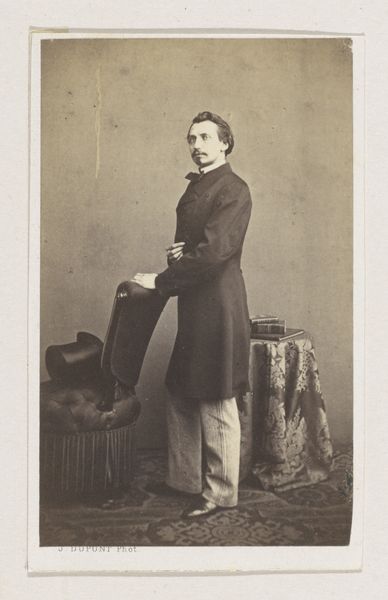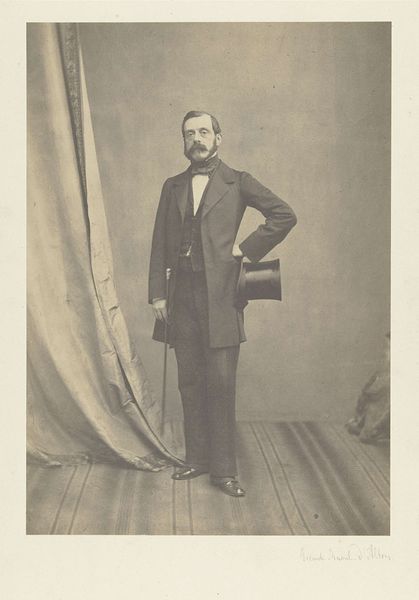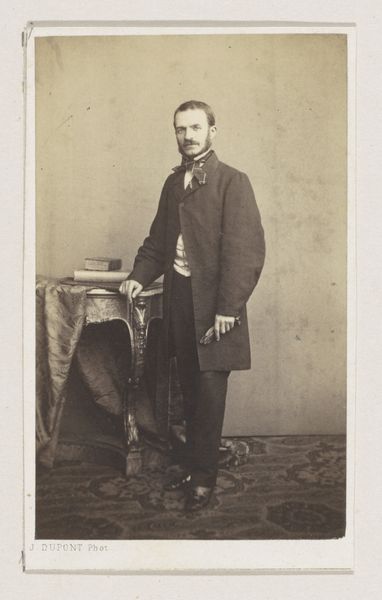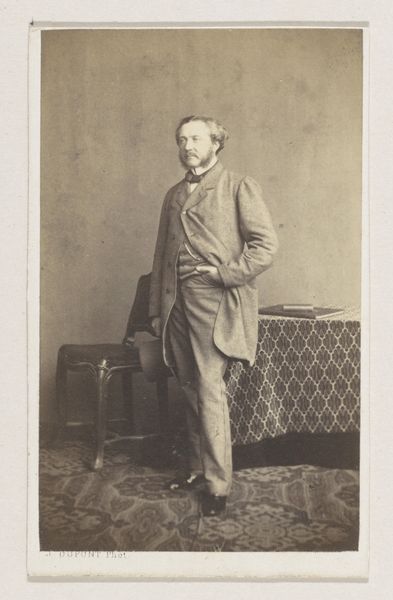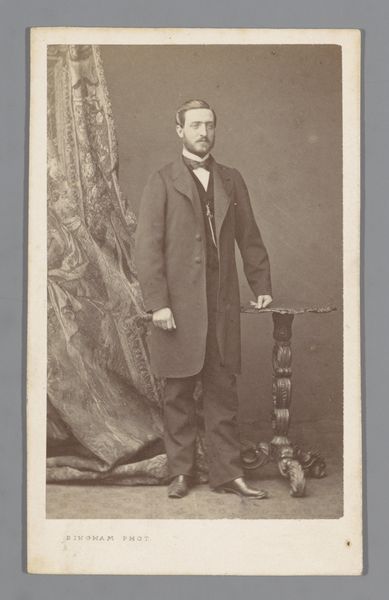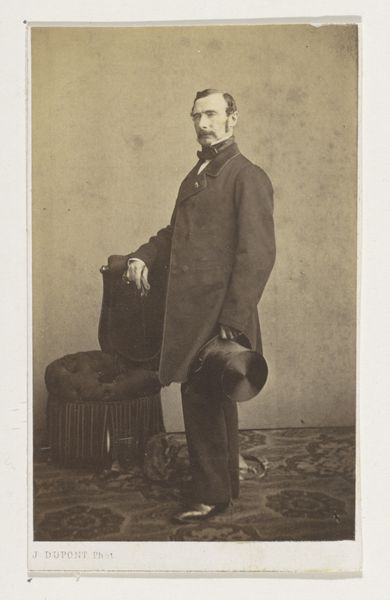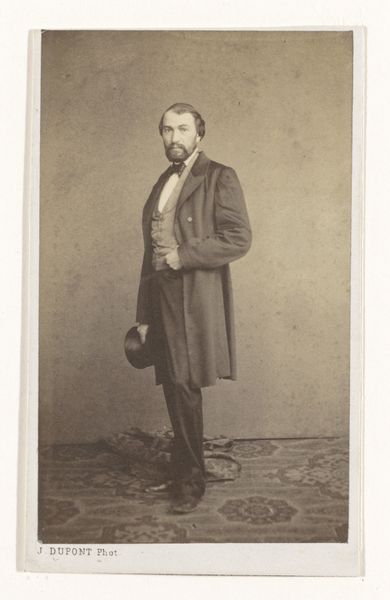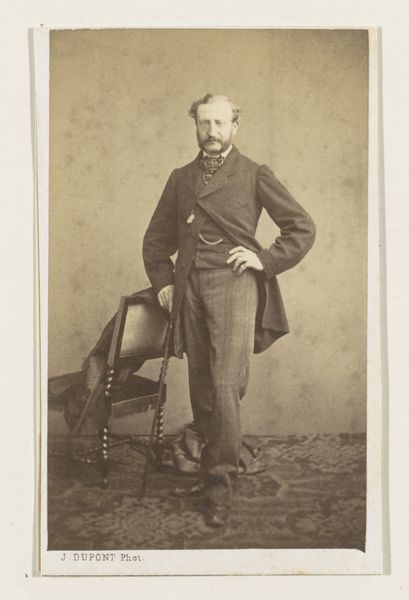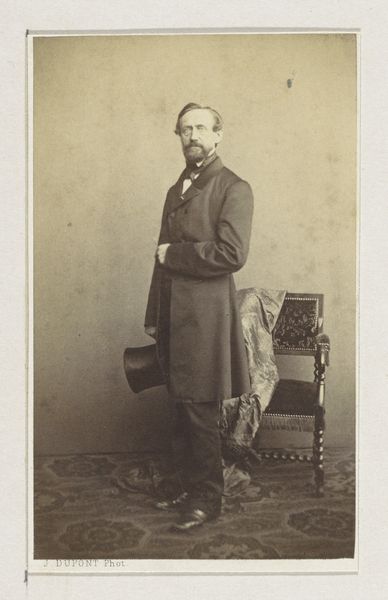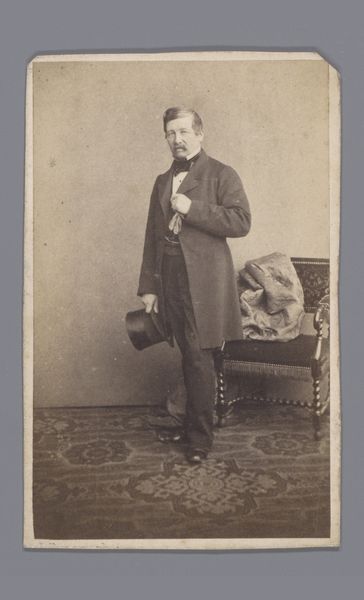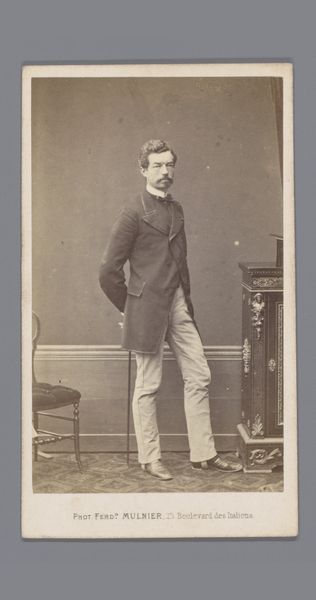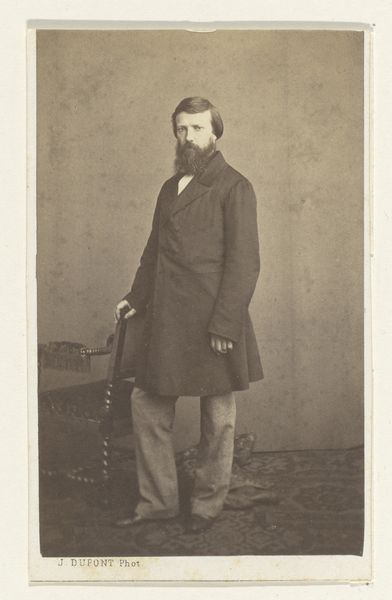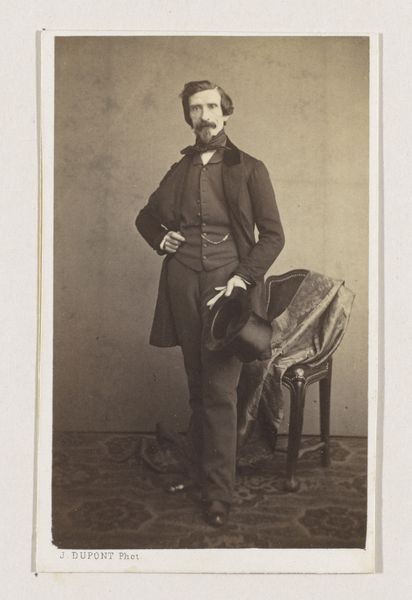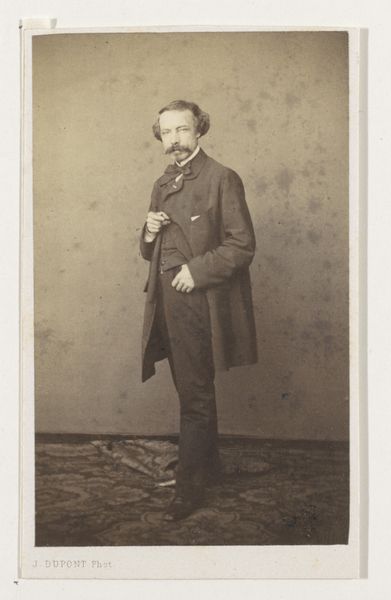
Dimensions: height 102 mm, width 61 mm
Copyright: Rijks Museum: Open Domain
This photograph immortalizes the painter Louis de Winter, captured by Joseph Dupont. Consider what it meant to be an artist in the 19th century, a time when societal roles were strictly defined by class, and access to artistic training and recognition was often limited. Dupont’s portrait captures more than just de Winter's likeness, it presents an identity carefully constructed. He stands confidently, his dark suit and poised demeanor suggesting a man of status. The trappings of wealth are present; the draped table and ornate rug, but also a hint of artistic identity, in the artist’s tools. But what does it mean to present oneself in this way? Does it challenge or reinforce the existing social hierarchies? Perhaps it reveals the artist's desire for recognition and success, but it also invites us to reflect on the complex relationship between art, identity, and social mobility during this period. How do these historical images affect our current understanding of identity and representation?
Comments
No comments
Be the first to comment and join the conversation on the ultimate creative platform.
